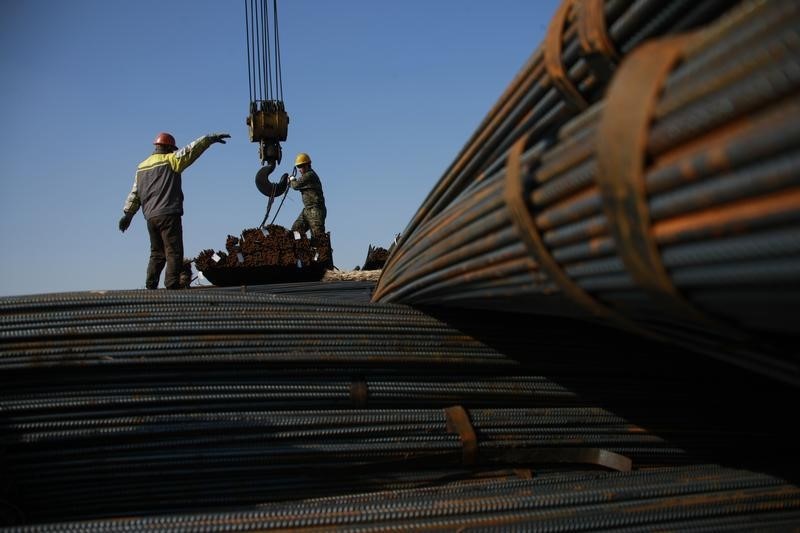By Manolo Serapio Jr
MANILA, Feb 29 (Reuters) - Some junior Australian and other Western iron ore miners are hedging forward cargoes for the first time in months after prices surged to their highest since October, trading sources say, looking to cash in on a price rally many fear may not last.
The volumes being hedged are not huge, but the move underlines the sense of caution in the market after years of slumping prices, despite a strong comeback. At one point last week, iron ore was the best performing commodity this year.
A junior Australian miner hedged a 300,000-tonne iron ore cargo for second quarter delivery last week, said a Singapore-based trader at an international trading firm, as prices topped $50 a tonne.
"The last time we've seen these miners come to us to hedge was in September when prices also rallied," the trader said, adding they are also in talks with the miner to hedge a similar sized cargo for the third quarter.
Hedging allows iron ore producers to cover future commitments at a fixed price, taking advantage of a current jump in market sentiment, even if the spot price falls back.
Iron ore for delivery in April SGXIOSJ6 and May SGXIOSK6 on SGX climbed to the highest since July at $48.25 a tonne last week while June SGXIOSM6 jumped to a five-month peak of $46.75.
"More and more inquiries are coming in," the trader said. "They're just not very confident of how sustainable the rally can be."
Iron ore .IO62-CNI=SI surged 7 percent to above $50 a tonne last Monday as buyers, anticipating brisk seasonal steel demand in China from March, snapped up spot cargoes.
The price peaked at $50.50 on Tuesday before retreating to $49.00 on Friday. At its high, iron ore was up nearly 18 percent for the year, outpacing gold to be the top commodity gainer this year. HEDGING STRATEGIES'
"Above $45 I think it changes the landscape fairly significantly," said a Singapore-based broker who's seen some Western miners hedging, "taking some positions in the market particularly for Q2."
"I would expect miners to be hedging when the price gets above $45 but I haven't seen them significantly," he said.
The primary hedging tools are iron ore swaps and futures on the Singapore Exchange SGXL.SI , the most liquid dollar-denominated marketplace for iron ore derivatives where volumes picked up as prices rallied.
"The general premise had been that lower prices would quickly force higher-cost junior producers to exit the market, though shrewd hedging strategies taking advantage of recently higher prices could undermine that," Adrian Lunt, head of commodities research at SGX, told Reuters.
Atlas Iron AGO.AX , a 12 million-tonne-a-year producer in Australia, mitigated an $8 per tonne fall in the benchmark Platts price from the September quarter to the December quarter with the help of hedging.
At the end of January, Atlas had about 1.2 million tonnes of sales for the current quarter locked in via forward sales, swaps, collars or puts at an average $48 a tonne, according to its latest quarterly operations report.
But Sean Russo, founder of hedging specialist group Noah's Rule and a former director of NM Rothschild and Sons, said the majority of hedging interest has still been coming from consumers instead of producers.
"They are buying further out because there is a very steep forward curve where they can still buy at $35 in the forward dates," he said.
<^^^^^^^^^^^^^^^^^^^^^^^^^^^^^^^^^^^^^^^^^^^^^^^^^^^^^^^^^^^ Graphic of Iron ore forward curve vs January 4, 2016:
http://tmsnrt.rs/1QFMecP
^^^^^^^^^^^^^^^^^^^^^^^^^^^^^^^^^^^^^^^^^^^^^^^^^^^^^^^^^^^>
